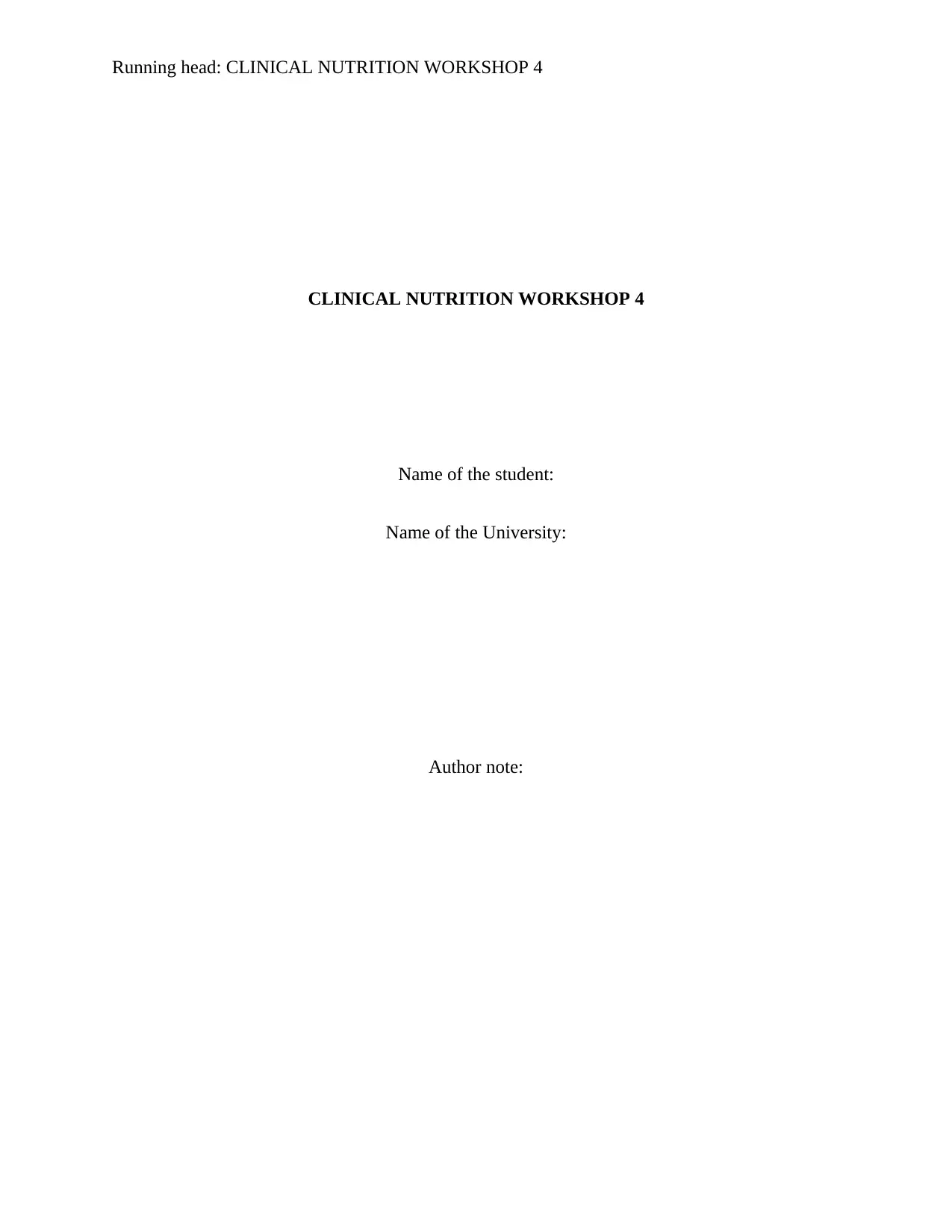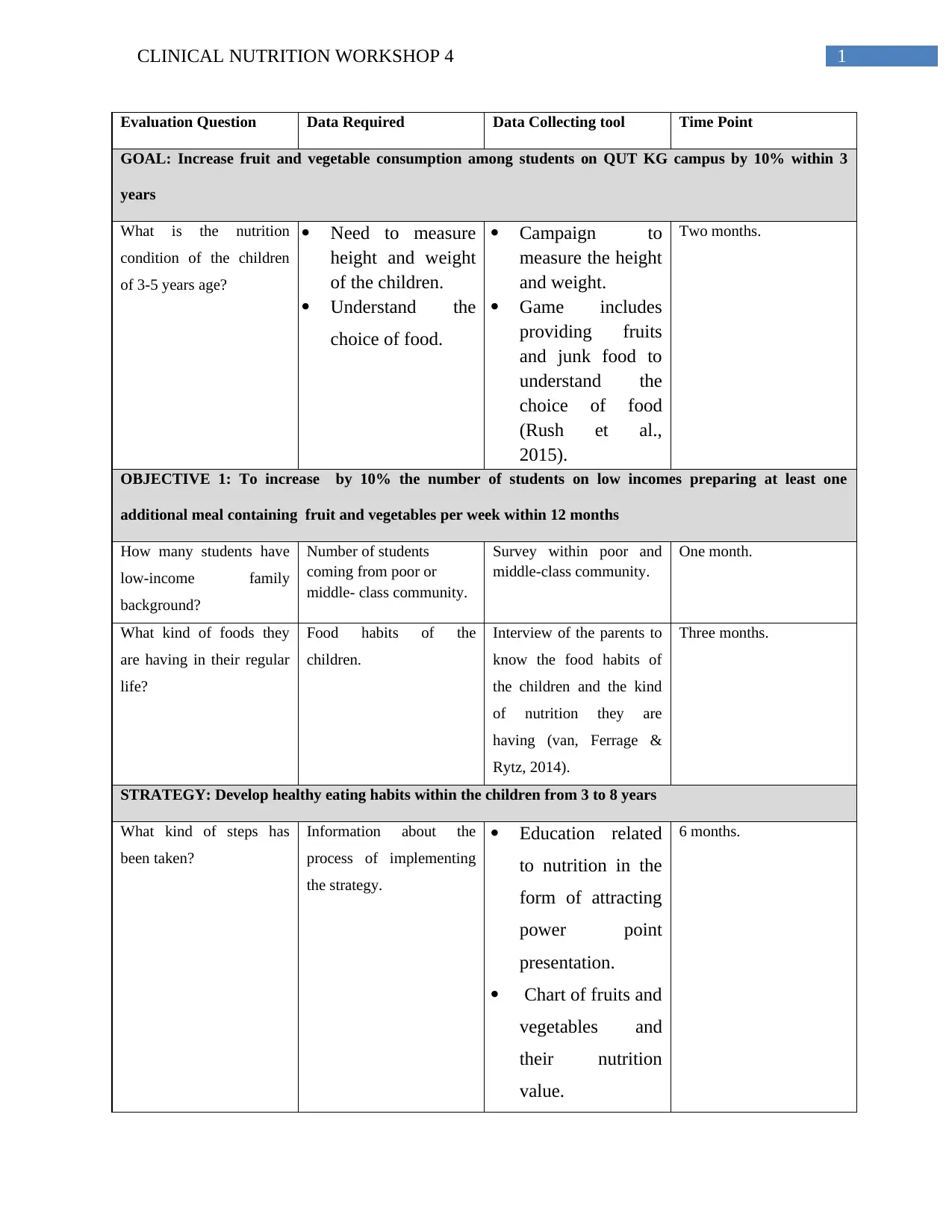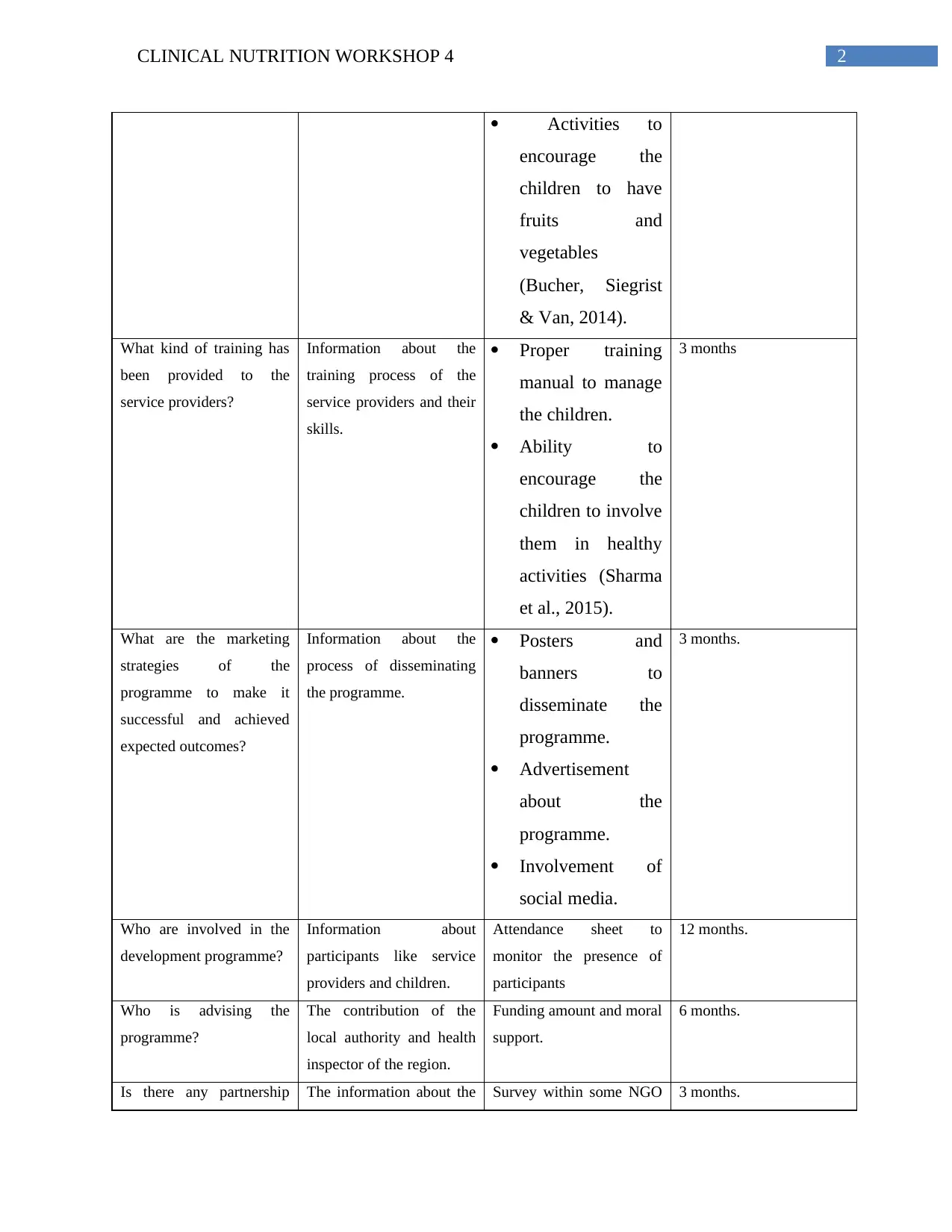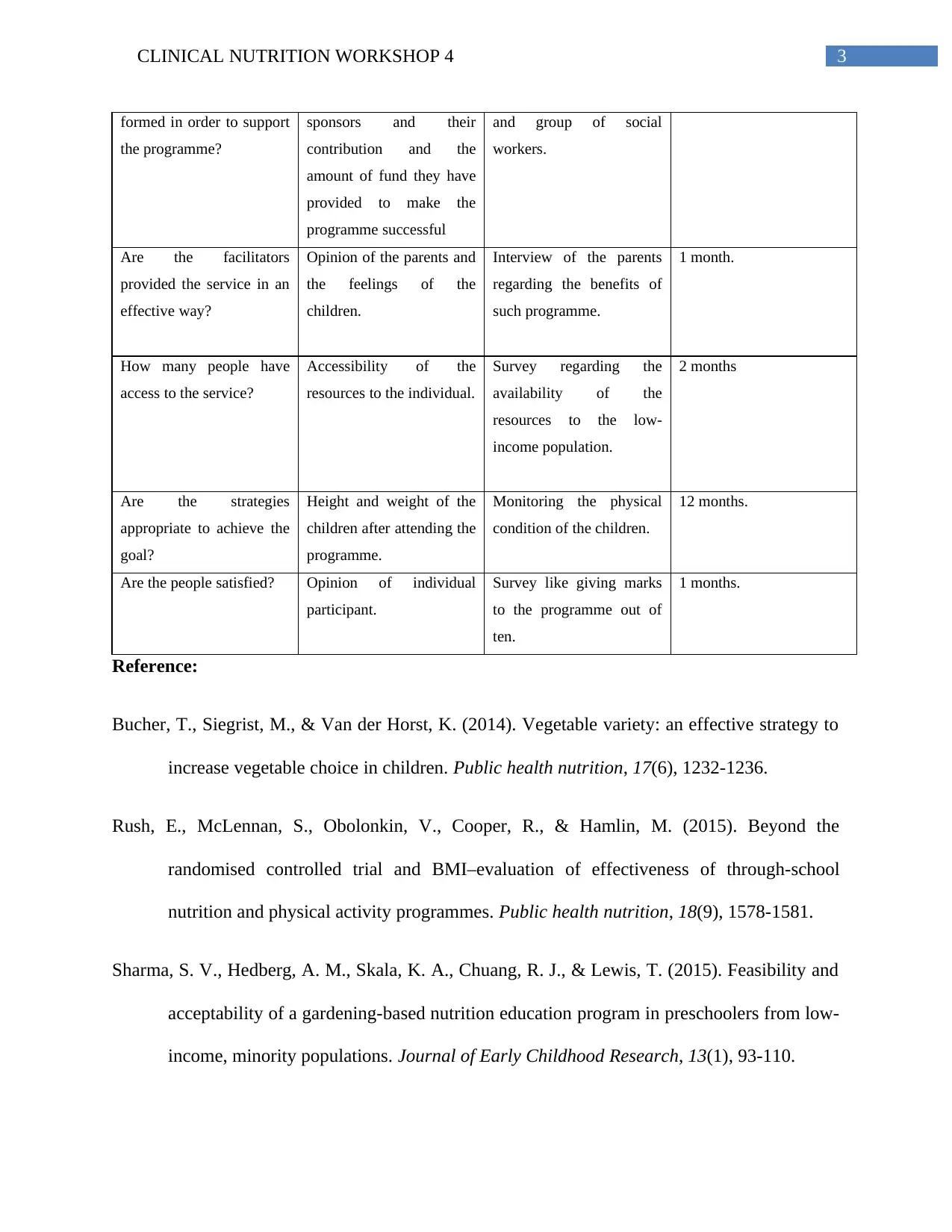Clinical Nutrition Workshop 4: Evaluation Plan for QUT Students
VerifiedAdded on 2023/06/11
|5
|848
|318
Report
AI Summary
This document presents an evaluation plan for a clinical nutrition workshop aimed at increasing fruit and vegetable consumption among students at the QUT KG campus. The plan outlines the goals, objectives, and strategies of the workshop, focusing on increasing the number of low-income students preparing meals with fruits and vegetables. It includes specific evaluation questions, data requirements, data collection tools, and timelines for assessing the effectiveness of the program. The evaluation covers various aspects, including the nutritional condition of children, food habits, training provided to service providers, marketing strategies, and the involvement of local authorities and NGOs. The plan also addresses the satisfaction of participants and the appropriateness of the strategies used to achieve the overall goal, incorporating methods like surveys, interviews, and monitoring of physical conditions.
1 out of 5












![[object Object]](/_next/static/media/star-bottom.7253800d.svg)